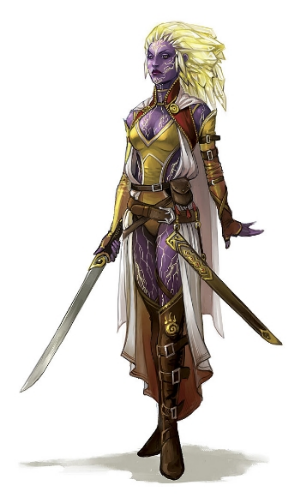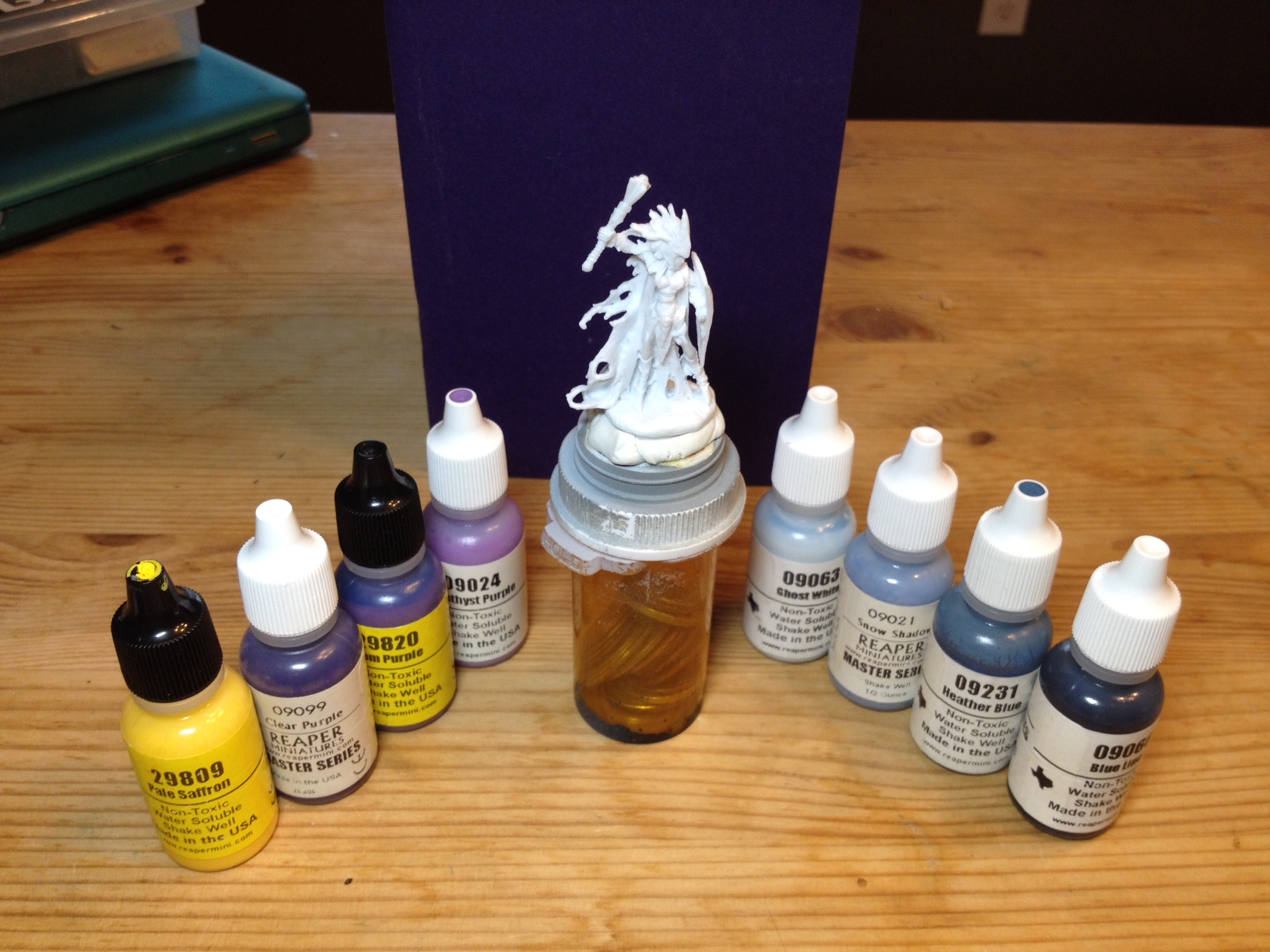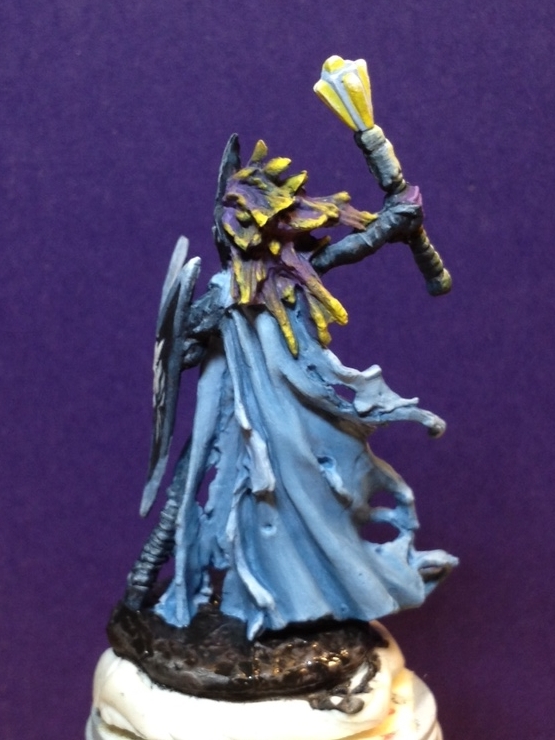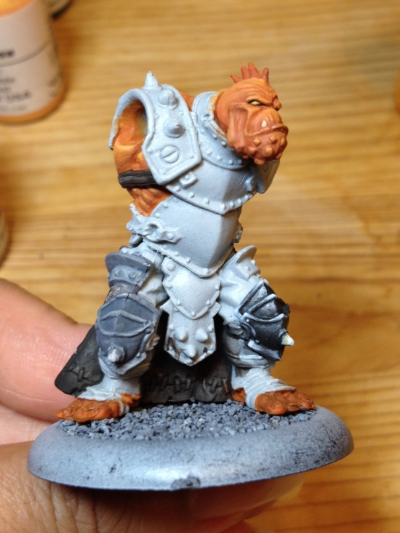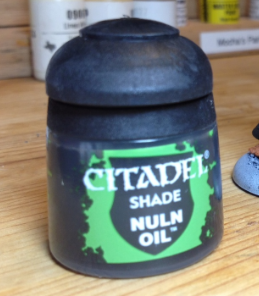Lately, I've been contemplating on how speed painting might help me develop into a stronger miniature painter. When I attended ReaperCon, I had the privilege of picking the brain of Derek Schubert, miniature painter, sculptor, and speed painter extraordinaire. Sometime soon I need to write a blog post about the totally awkward (on my part) yet inspiring experience. I've wanted to write about it since early May. Stay tuned for that!
Since then, I've realized that there is no magical element or secret to speed painting. In fact, I firmly believe that it's all in the approach. The more preparation there is, the less likely you'll need to repaint sections of the miniature due to impulsive and/or poor decisions (mostly regarding color). In my opinion, speed painting is most successful after thoughtful and clever planning. It doesn't take much, and the initial thought that you put in will definitely show. I truly believe that Derek Schubert can analyze a miniature and "see" the final application of colors coming together on a finished miniature before he even picks up his paint brush. The man just doesn't make mistakes. Again, I digress!
My first speed painting endeavor was a failed attempt because I just didn't plan well. I picked colors I liked, and since I had a hard time narrowing them down, I attempted to use them all. I started slapping paint on the miniature, focusing only on the speed in which I applied paint. I didn't want to take time to layer colors for smooth blending, so I didn't thin down my paint. Once I realized my mistakes, it was too late. My alternatives were either repainting sections while building unwanted chunky textures or rethinking the entire color scheme. It was frustrating. In the end, I named him Skittletor after the candy with the slogan "Taste the Rainbow". Skittletor looked like he lost a fight with an angry color wheel. Red, brown, orange, red, teal, navy blue-- he had it all. While I don't consider him a painting success, I learned some valuable lessons in the process.
I found I prefer very tight color schemes. In the past, I tried to use more colors in the hopes that it would result in a more dynamic miniature. Instead, I like using one or two bright colors and a few neutrals. It keeps the focus in places I want to highlight, and having only one or two main colors keeps other parts of the mini from competing for attention. In addition, I'll use different shades of the same color in several places on the miniature to create an overall visual unity.
I also fully admit: I struggle with metals. Despite looking up real metal image references, I find it difficult to find where the light reflections are supposed to fall when considering the light source. I think using metallic paints are an easy way around this, however, I find the final effect highly distracting when compared to the matte paint finish on the rest of the mini. Any highlights I paint on matte surfaces are often upstaged by natural light reflections in the metallic paint that are beyond my control. Because of that, I try to avoid painting metal when speed painting-- at least for now. My speed painting will involve honing skills and finding ways to apply them more efficiently, not attempting to solve my most difficult painting barriers... which brings me to the Speed Paint Challenge!
Recently a Twitter friend & fellow miniature painter took my Genasi Warden speed paint exercise and turned it into a personal challenge. He used the same Reaper Bones miniature with similar paint colors-- he did a great job given only 2.5 hours! I decided to continue the fun and invited him to join me in a #speedpaintchallenge with a new Reaper Bones miniature and we agreed to these guidelines:
Speed Paint Challenge Rules
- Colors: 6 earth tones, 2 neutrals [+ 1 metallic if needed]
- Time Limit: 4 hours or less
- Miniature: Elquin, High Adventurer · Reaper Bones #77092 ($2.49)
- Deadline: next Miniature Monday : September 1st, 2014
Here's my chosen color scheme:
Reaper paints shown [L to R]: Linen White, Pale Green, Viper Green, Pine Green, Muddy Brown, Golden Shadow, Golden Highlight, Brown Liner
We'll both feature our results via Twitter and I'll include my process in next Monday's blog post. Let the speed painting begin!


